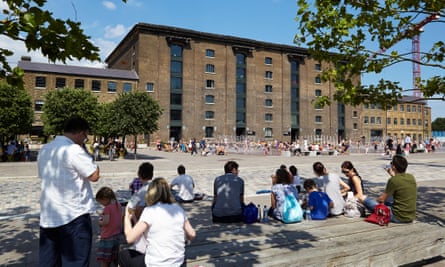A university that specialises in the creative arts, and recruits nearly half of its students from overseas, sounds like a place designed to irk the science-promoting government ministers who want to turn away international students.
But James Purnell, vice-chancellor of the University of the Arts London, says the answer is to use UAL’s strengths to steer clear of political turbulence.
“We need to have our destiny in our own hands. Obviously we think about government policy, but in the university sector if you’re able to have a strong reputation and recruit strongly, then what the government does is important but it doesn’t stop you from getting on with your mission,” Purnell says.
A former Labour MP and culture secretary in Gordon Brown’s cabinet, since 2021 Purnell has headed the sprawling institution that includes some of the creative arts sector’s most famous names among its constituent colleges: Central Saint Martins, Chelsea College of Arts, the London College of Fashion, Camberwell College of Arts, London College of Communication and Wimbledon College of Arts.
While other creative and visual arts institutions have struggled in a political climate that has cut specialist funding and prioritised Stem (science, technology, engineering and maths) subjects and graduate employment, UAL has flourished, growing to more than 21,000 undergraduate and postgraduate students from 130 countries across its six colleges.
At the same time, UAL’s position has risen in the Guardian University Guide, progressing from 45th four years ago to 26th, 19th and now 15th, its highest ever. Its latest position – above Russell Group luminaries such as Bristol, Southampton and King’s College London – has been driven by sector-leading staff-student ratios and spending.
Matt Hiely-Rayner, the director of Intelligent Metrix, the data consultancy that administers the guide’s tables, says UAL’s ranking has been particularly helped by an increase in student entry grades as well as lower drop-out rates than in previous years.
At subject level, UAL’s creative focus is rewarded with top rankings in interior design and animation and games design, as well as expected strong performances in fine arts and textiles and design, followed by graphic design and product design, with its marketing and public relations course another high point.
With a new campus for the London College of Fashion about to open in Stratford, east London, and with only Oxford and Cambridge spending more on each full-time student, the question is how UAL can afford this with domestic tuition fees frozen since 2016.
According to Purnell there are two factors: “We created a financial formula which basically hypothecated money to teaching and learning, so we’ve increased that as a proportion of our income every year. It’s been partly about tough discipline and where we focus our money.
“The other factor is because we have significant international recruitment, we have a higher unit of resource. International students pay more than home students, so on average we have also been able to have more money in absolute terms, and put more of that money into teaching and learning.”

When politicians talk about international students taking away places from UK students, Purnell says: “I find it very frustrating because exactly the opposite is true. International students are actually making the current system possible.
“At UAL the cost of delivery for a course is about £12,000 so we make a financial loss of £3000 on every UK student, and we’re able to offer the education that we do because international students pay more. They’re making it possible for far more people to get to go to university.
“Essentially, international students are paying for quite a lot of the cost of our university system, which would cost British taxpayers more and British graduates more if they weren’t there.”
Prof Roni Brown, UAL’s deputy vice-chancellor for education, says the university has used its position to support as many students as possible through the cost of living crisis, through increased hardship funds and bursaries, and tackling the high cost of materials for arts students.
Despite the costs and difficulties facing students in London, it doesn’t appear to deter applicants.
“We have a very competitive intake, we now have 60,000 applications for just over 9,000 places, so that competition is increasing alongside the hard work we are doing to improve student experience, opportunities and success,” says Brown.
“We offer a unique model of education at UAL through our curriculum. We believe it supports creativity that leads to innovation and a better world. There is good growth and good opportunities here for our students, that’s what we want to emphasise.”
Stay connected with us on social media platform for instant update click here to join our Twitter, & Facebook
We are now on Telegram. Click here to join our channel (@TechiUpdate) and stay updated with the latest Technology headlines.
For all the latest Education News Click Here
For the latest news and updates, follow us on Google News.
